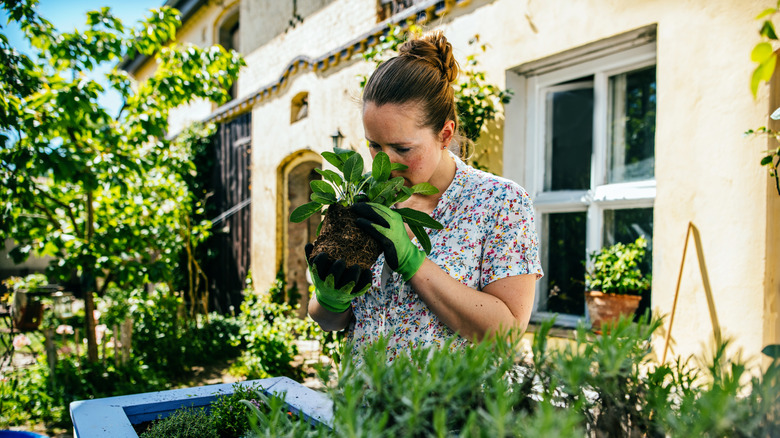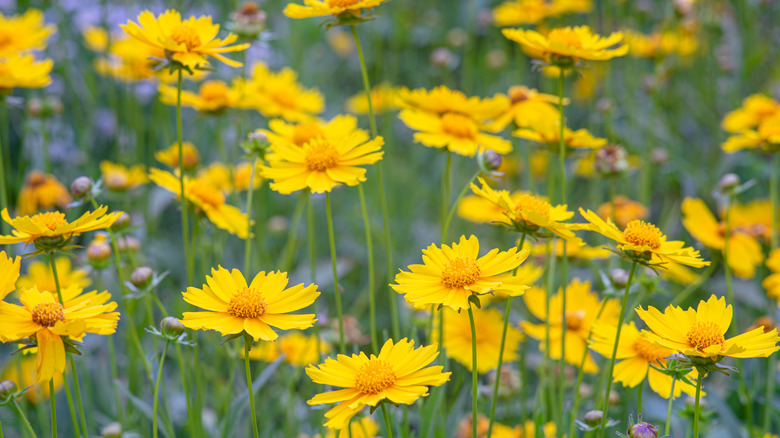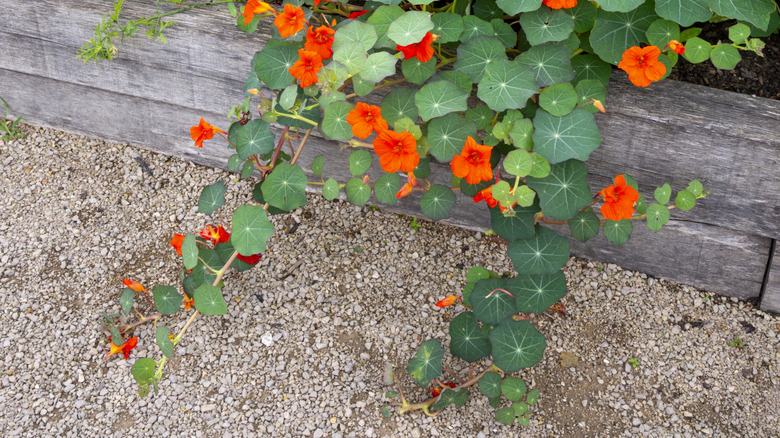Here Are Two Perfect Flower Pairings For Sage In Your Garden
Revered for its aromatic leaves and versatile applications, sage (Salvia officinalis) is a great addition to any herb garden. Its usefulness goes beyond the garden and even the kitchen, with many genius ways to use sage around the house. But if you want to add a little life to a patch of sage with colorful flowers that bring more than just pretty blooms to the garden, try coreopsis (Coreopsis spp.) and nasturtium (Tropaeolum majus).
Like sage, which is hardy in USDA Zones 4 through 10, both of these plants love the sun and can handle dry conditions. They will fare well in containers or in the ground and bring pollinators to the garden. Combining flowers and edibles is the foundation of cottage gardens, and, increasingly, pairing edibles and flowers is gaining traction again. Critically, when the plants are paired properly, they can do more than just look pretty — they can help each other. Learn more about companion planting and its benefits in your garden before planting your sage or any plant in your garden beds.
Coreopsis
You will likely find different varieties of coreopsis at your local nursery. In addition to various colors, you will find that some are annuals and others are perennials. Be sure to pay attention to which kind you are buying. If you plan to plant in the ground, you probably want a perennial, but if you will be potting the plant, an annual may work just as well.
When choosing a perennial variety, pay attention to the hardiness zone. The threadleaf coreopsis (Coreopsis verticillata) is native to much of the eastern United States and is hardy in zones 3 through 9. Hybrids, however, may not be as cold-hardy. Lanceleaf coreopsis (Coreopsis lanceolata), on the other hand, is native to the southern U.S., so pay attention to the details when purchasing plants or seeds. No matter what variety you choose, you will get a colorful flower that thrives in poor soil conditions. They typically grow to about 2 feet tall, attract butterflies, and are known for being low-maintenance and disease-resistant.
Nasturtium
Where coreopsis is tall and upright, nasturtium is a creeping vine. Given something to climb, it will do just that. Planted in the ground, it will work well as a groundcover. And in a pot, it can function as a spiller in your container garden design formula. The vines can grow up to 10 feet long. If you are not into vines, there are bushy varieties as well. Whichever growth habit you prefer, they come in a wide variety of vibrant colors, ranging from yellow to orange and red.
Many gardeners use nasturtium to deter insects naturally, and it's also edible. In other words, it is a versatile plant that can find a way to be useful in almost any garden environment. These drought-tolerant plants are the epitome of low-maintenance, accepting sandy or loamy soil, and grow in hardiness zones 2 through 9. Nasturtium is thought to repel aphids, whiteflies, and some beetles, making them popular companion plants in many gardens. They attract various species of bugs away from vulnerable vegetable plants, acting as trap plants. As if that wasn't enough reason to plant them with your sage, they also attract pollinators, bringing even more wildlife to your garden.


